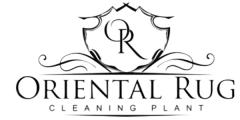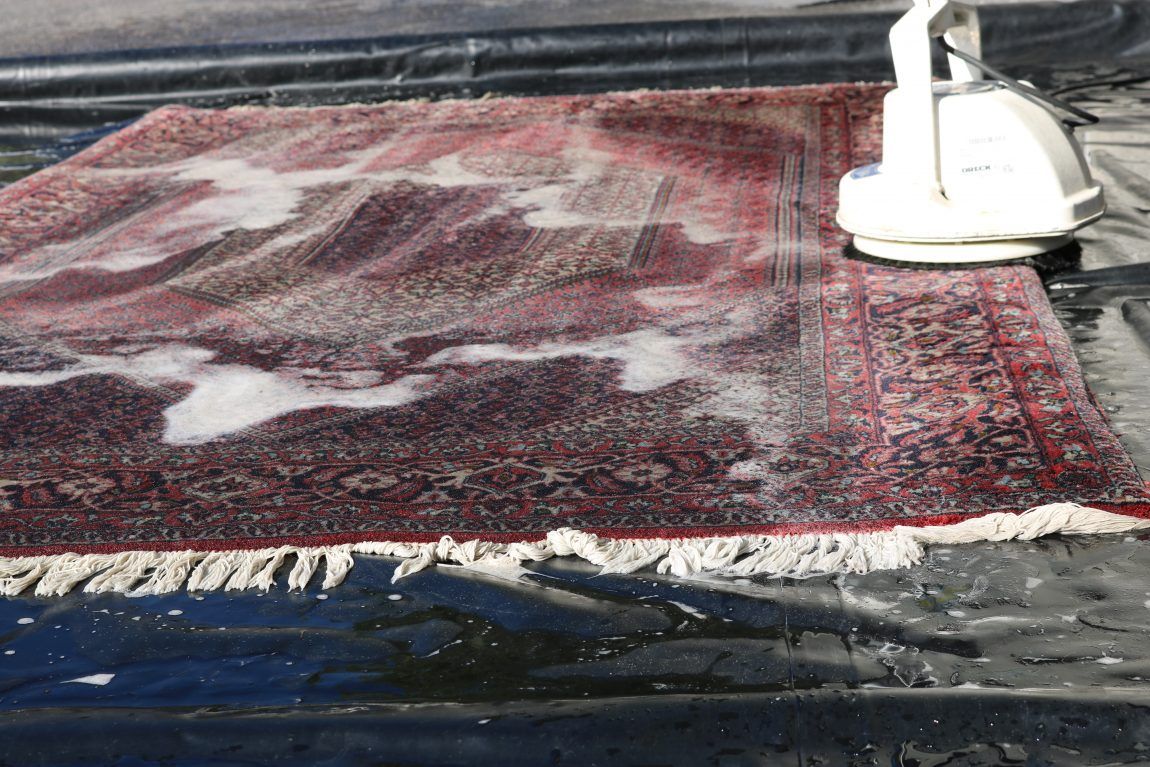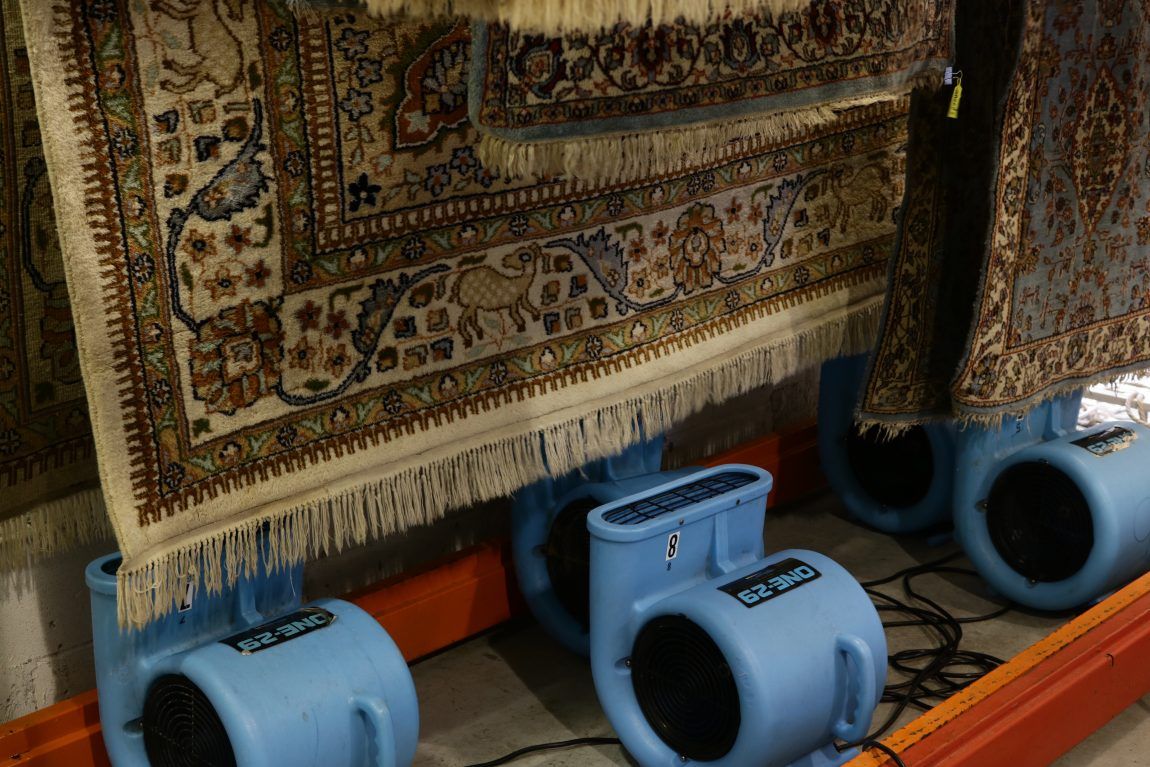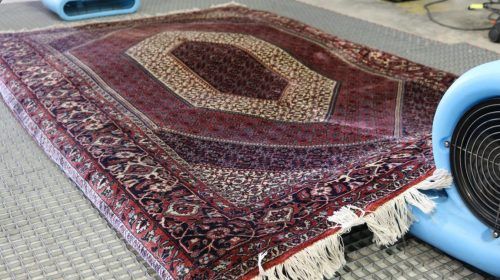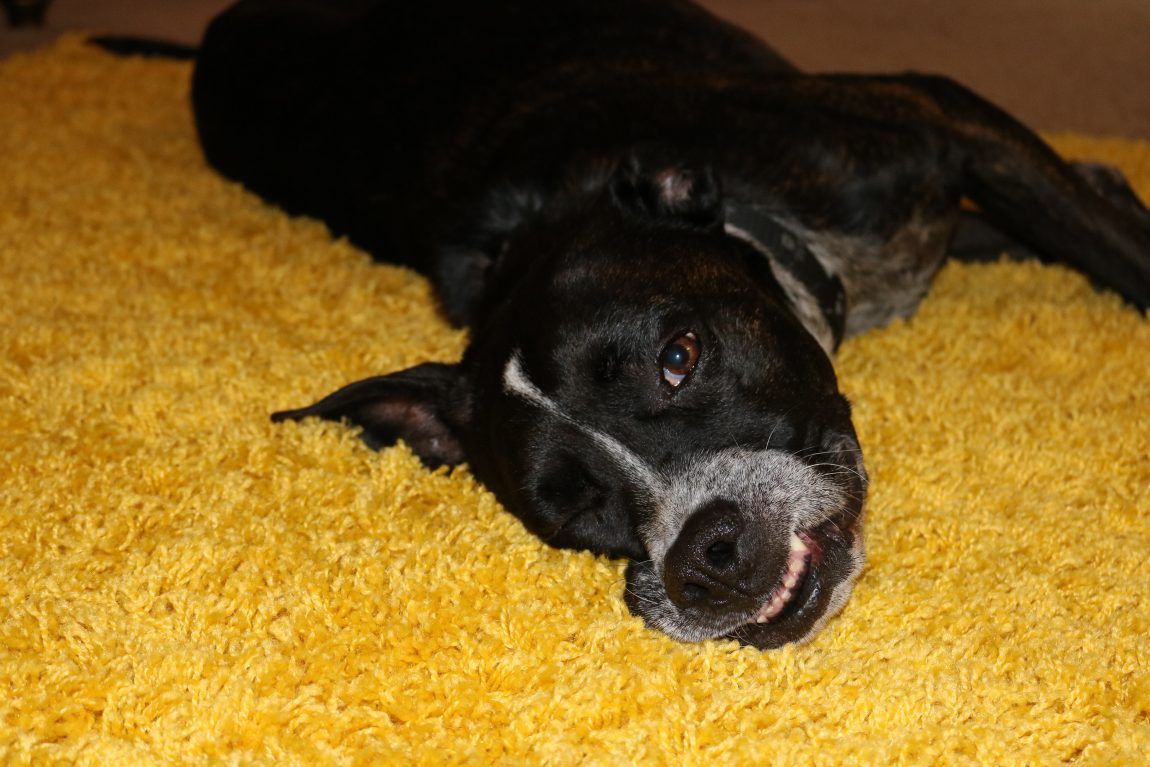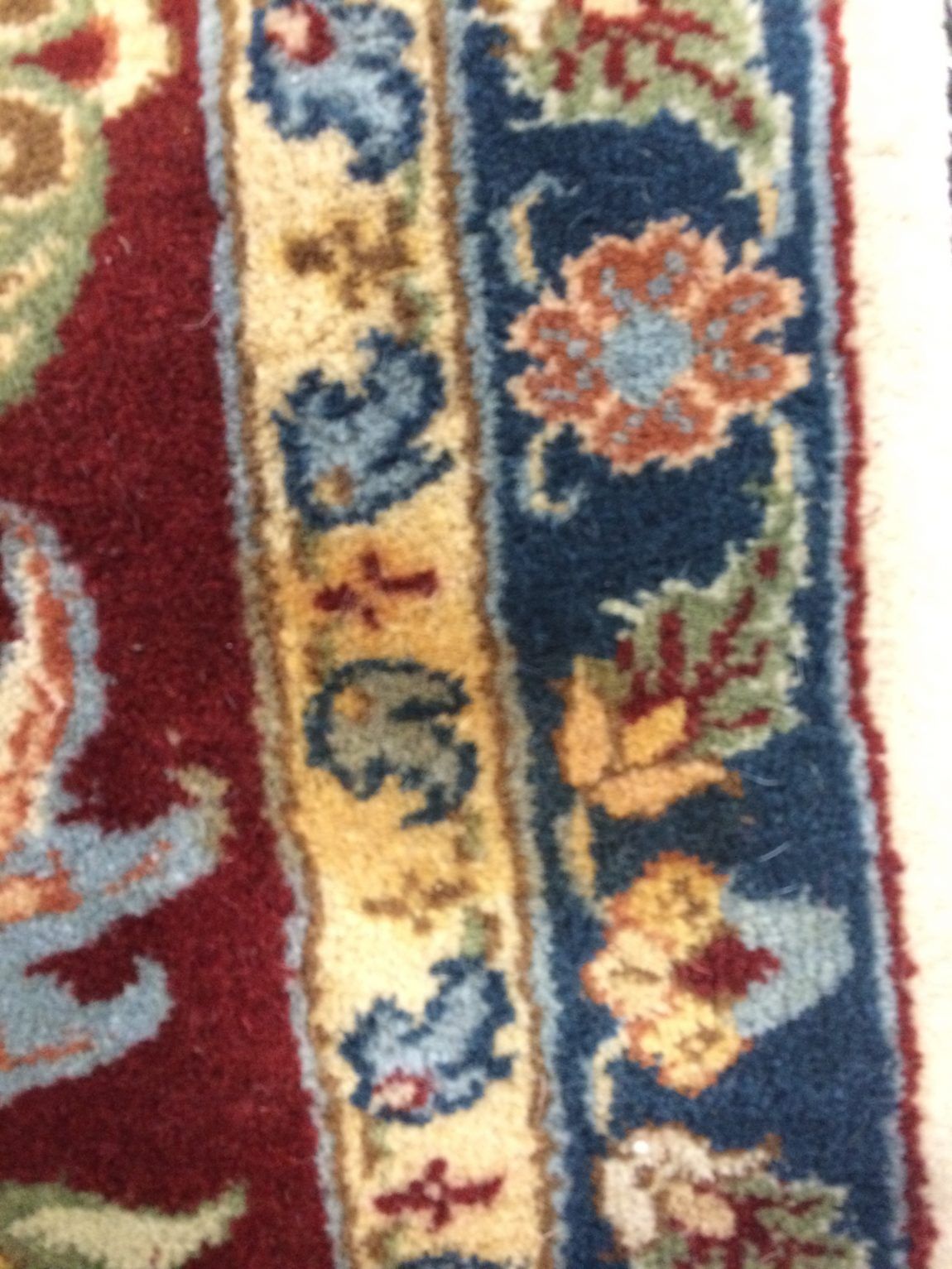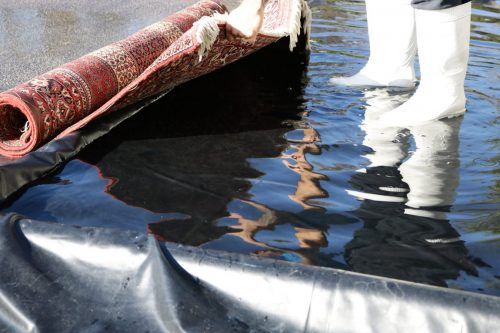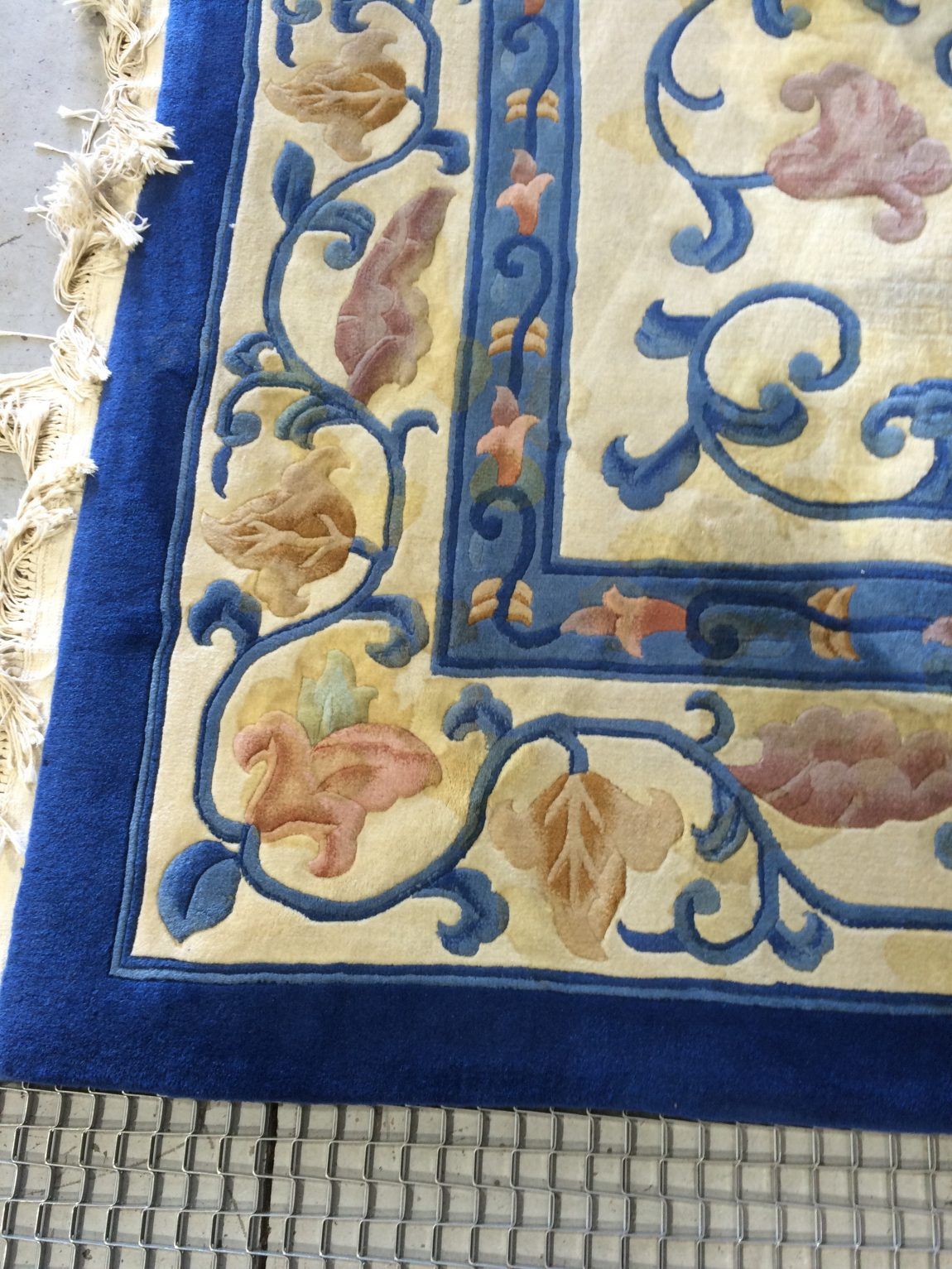Important Steps In Rug Cleaning
There are many steps in our area rug cleaning process professional rug washing technicians take to complete a safe, quality cleaning of your Natural Fiber Rug. Each step we take throughout the washing process is just as important as the next. Inspections are important as they allow us to prepare for the most optimal washing process achievable. Our initial inspection will test fibers to verify the material of the rug pile so we can ensure we are using the proper washing solutions. The initial inspection will also let us know if there are any issues with the dye used to decorate the rug. If we see any signs of dye transfer or color bleeding being a possibility, we are then able to properly pretreat the rug to stabilize the dye prior to beginning the washing process. We conduct an inspection of the rug after completion each portion of the washing process is completed. As important as the inspections are, each step of the cleaning process is just as important.
 The dusting process beats the back of the rug to knock out what could be a few pounds of dirt, dust and hair. A well dusted rug will help the washing process to be deep and thorough. With minimal obstruction, the cool water will flush deep into the base of the fibers. Once we begin to flush the rug, the washing process really begins. The rug is submerged and flushed prior to applying the fiber specific prespray. Once the prespray has been applied and has had time to set, the agitation process begins. This is another big step in the rug cleaning process. Agitating the rug fibers using a hand operated orbital opens the fibers up to help extract as much dirt, dust and sand as possible. Agitation also helps to work the washing solution deep into the base of the rug through the opened fibers. Proper agitation can make all the difference in the final outcome of the wash. The final dry completes the trifecta of importance. If a rug is improperly dried it can shrink, damage the fibers, fringes or backing (if tufted) and can cause mold, mildew and bug problems deep in the base. The base of any woven rug is very tightly compacted, making it a bit more involved to achieve a complete dry. That is one of the main reasons you do not want to “Steam Clean” your natural fiber rug. Regardless of the machine being used for that type of cleaning, the vacuum is never strong enough to fully dry a rug. We use a secret method to safely extract a large majority of the water. Then we allow the rug to dry on our custom built rack, which uses cool air movers to help provide a complete and thorough dry. Each step in the process of oriental carpet cleaning is important and we strive to provide the best Rug Washing possible!
The dusting process beats the back of the rug to knock out what could be a few pounds of dirt, dust and hair. A well dusted rug will help the washing process to be deep and thorough. With minimal obstruction, the cool water will flush deep into the base of the fibers. Once we begin to flush the rug, the washing process really begins. The rug is submerged and flushed prior to applying the fiber specific prespray. Once the prespray has been applied and has had time to set, the agitation process begins. This is another big step in the rug cleaning process. Agitating the rug fibers using a hand operated orbital opens the fibers up to help extract as much dirt, dust and sand as possible. Agitation also helps to work the washing solution deep into the base of the rug through the opened fibers. Proper agitation can make all the difference in the final outcome of the wash. The final dry completes the trifecta of importance. If a rug is improperly dried it can shrink, damage the fibers, fringes or backing (if tufted) and can cause mold, mildew and bug problems deep in the base. The base of any woven rug is very tightly compacted, making it a bit more involved to achieve a complete dry. That is one of the main reasons you do not want to “Steam Clean” your natural fiber rug. Regardless of the machine being used for that type of cleaning, the vacuum is never strong enough to fully dry a rug. We use a secret method to safely extract a large majority of the water. Then we allow the rug to dry on our custom built rack, which uses cool air movers to help provide a complete and thorough dry. Each step in the process of oriental carpet cleaning is important and we strive to provide the best Rug Washing possible!
